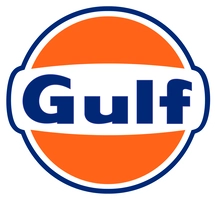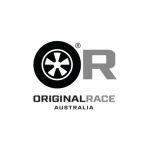Suppose you’ve ever felt the adrenaline rush of pushing your car just a bit too fast on an empty road.
In that case, you might have wondered what it’s like to sit behind the wheel of a car capable of winning Le Mans.
“Ford vs Ferrari” takes that daydream and cranks it up to 11, delivering a high-octane tale of speed, ambition, and one of the greatest rivalries in automotive history. Imagine being plopped right into the driver’s seat of a roaring GT40, with the finish line in sight and Ferrari’s red streak in your rearview mirror. This film doesn’t just show you that world – it throws you headfirst.
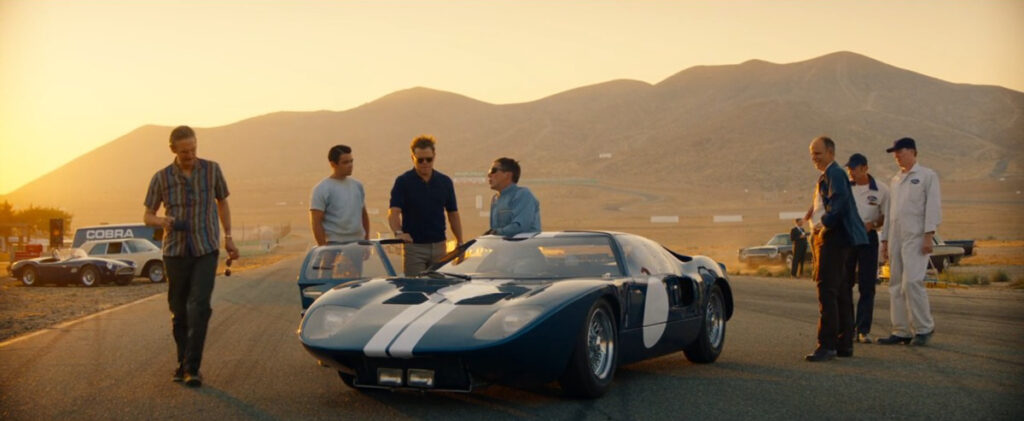
As professional car enthusiasts and reviewers, we’ve seen our fair share of automotive flicks, but “Ford vs Ferrari” is more than just a film about cars. It’s about the grit, the passion, and the relentless pursuit of perfection that defined an era. Directed by James Mangold and starring Matt Damon and Christian Bale, this movie is an exhilarating ride through the annals of racing history. Let’s buckle up and dive into what makes this film a must-watch for anyone with petrol in their veins.
Historical Accuracy
Watching “Ford vs Ferrari” is like opening a time capsule from the 1960s racing scene. The film takes you back to a period when car racing wasn’t just a sport – it was a battleground of innovation and pride. The movie meticulously recreates the tense atmosphere of the time, right down to the most minor details. From the smoky garages to the sun-drenched tracks of Le Mans, every scene is a love letter to the golden age of racing.
But how true is it to actual events? Well, let’s start with the rivalry itself. In the early 1960s, Henry Ford II was hell-bent on beating Enzo Ferrari at his own game. After a failed attempt to buy a Ferrari, Ford built a car that could snatch victory from the prancing horse at the gruelling 24 Hours of Le Mans. This wasn’t just about cars – it was a clash of titans, a showdown between American muscle and Italian finesse.
As the film unfolds, we’re introduced to Carroll Shelby (played by Damon) and Ken Miles (Bale). Shelby, a brash Texan with a knack for engineering and a taste for fast cars, was brought in to spearhead Ford’s campaign. Miles, a British racer with a flair for the dramatic and a bit of a maverick streak, was the wheelman who could tame the beastly GT40.
The film brilliantly captures their partnership and the trials they faced. Sure, there are a few Hollywood embellishments – a punch here, a dramatic pause there – but the core story is spot on. Shelby and Miles were the dynamic duo that turned Ford’s dream into reality. Watching their journey on screen, you can almost smell the burnt rubber and feel the tension of the race against time.
So, if you’re a stickler for historical accuracy, “Ford vs Ferrari” hits more than it misses. It’s a thrilling, true-to-life account that doesn’t just show the race – it immerses you in the high-stakes world of 1960s motorsport. And trust us, after watching this, you’ll have a newfound respect for the legends who lived it.
Performances
Now, let’s talk about the heart and soul of this film – the performances.
You’re sitting in the grandstand, the roar of engines in your ears, and there’s Matt Damon, embodying Carroll Shelby with all the swagger and charm you’d expect from the legendary car designer. Damon delivers a performance that’s as smooth as a freshly polished Shelby Cobra, effortlessly capturing Shelby’s larger-than-life personality and relentless drive.
Then, there’s Christian Bale as Ken Miles. If you’ve ever wondered what it’s like to see a man truly become one with a machine, Bale’s portrayal is your answer. He plays Miles with a fierce intensity and a raw edge that makes you believe he could wring every last ounce of speed out of any car he touches. Bale doesn’t just play Ken Miles – he inhabits him, from the determined glint in his eye to the way he handles the steering wheel with a mix of aggression and finesse.
Their chemistry on screen is electric. Damon and Bale bounce off each other with a natural ease, their interactions filled with wit, tension, and mutual respect. One of the standout scenes features a no-holds-barred brawl between Shelby and Miles that’s as entertaining as it is revealing of their deep, albeit complex, friendship. You can’t help but chuckle at the absurdity of these two grown men rolling around on the grass, only to end up laughing and sharing a drink afterwards. It’s moments like these that humanise these legends, making their story relatable and engaging.

The supporting cast is equally impressive. Jon Bernthal as Lee Iacocca brings a sharp, business-savvy edge to the film. Tracy Letts delivers a powerful performance as Henry Ford II, capturing the might and vulnerability of a man trying to step out of his grandfather’s shadow. Each actor brings something unique, contributing to a rich tapestry of characters that drive the narrative forward.
The film’s performances aren’t just about delivering lines – they’re about capturing the spirit of an era and the personalities that defined it. Whether it’s the steely determination of Shelby, the fiery passion of Miles, or the calculated ambition of Ford, “Ford vs Ferrari” is a masterclass in bringing history to life through stellar acting. It’s a performance-driven spectacle that keeps you riveted from start to finish, reminding us that behind every great car is a team of extraordinary individuals.
Cinematography and Visual Effects
Let’s dive into the visual feast that is “Ford vs Ferrari.” Imagine yourself strapped into the passenger seat of a roaring GT40, feeling every vibration, every gear shift, and every heart-stopping moment of a high-speed chase. That’s exactly what the film’s cinematography achieves, pulling you into the thrilling world of 1960s racing with breathtaking precision.
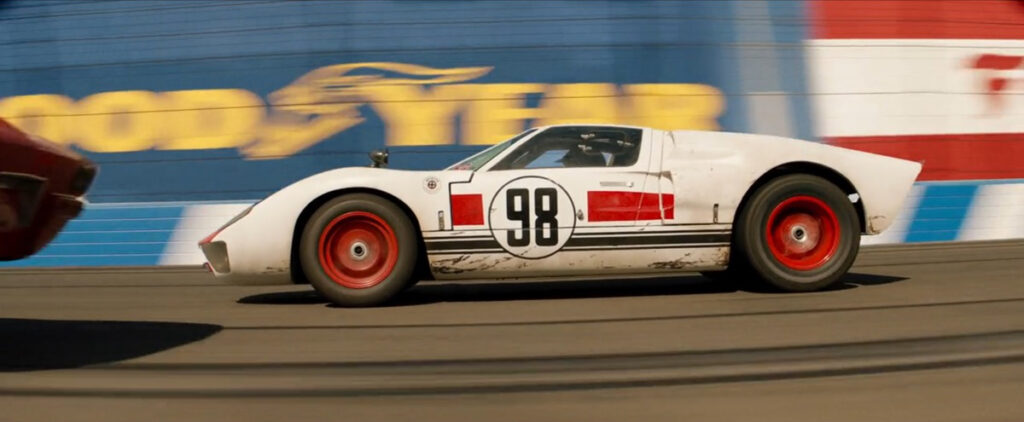
The racing sequences are nothing short of spectacular. Director James Mangold and cinematographer Phedon Papamichael have crafted scenes that are as thrilling to watch as they must have been to race in. Using a mix of practical effects and minimal CGI, the film captures the raw, unfiltered energy of the track. You feel the tension as cars jostle for position, the danger as they careen around tight corners, and the exhilaration of the open straightaways. It’s a visceral experience, akin to watching an artist at work, where every frame is meticulously crafted to maximise impact.
One standout sequence is the 24 Hours of Le Mans race itself. The camera work here is phenomenal, with dynamic angles that make you feel as if you’re right there in the thick of it. The use of close-ups during crucial moments – like when Ken Miles is pushing the GT40 to its limits – adds an intimate layer of intensity. Wide shots of the French countryside contrast beautifully with the roaring speed of the cars, creating a visual symphony that celebrates both the beauty and brutality of endurance racing.
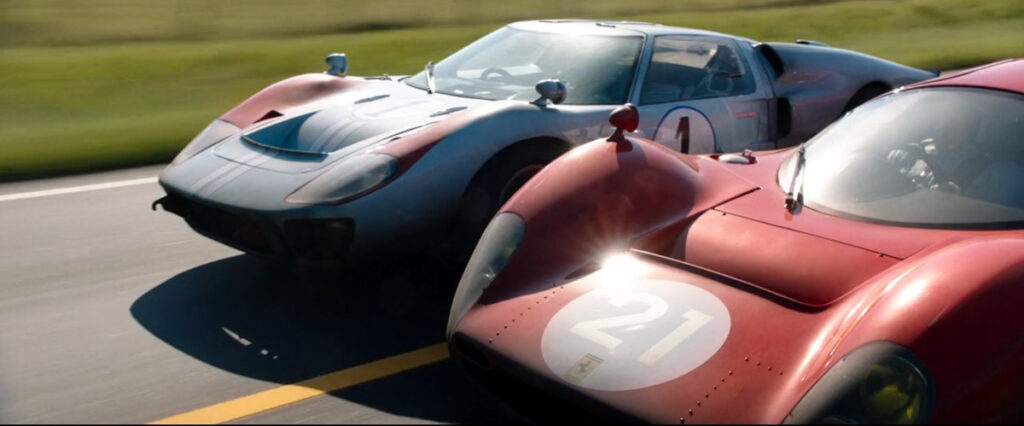
The practical effects deserve special mention. Unlike many modern films that rely heavily on CGI, “Ford vs Ferrari” uses real cars and practical stunts to deliver authenticity. When you see the GT40s hurtling down the Mulsanne Straight, those machines are driven by skilled stunt drivers. This commitment to realism pays off, making the racing sequences feel gritty and tangible. The sound design complements this perfectly – the roar of the engines, the screech of tyres, and the cheers of the crowd blend seamlessly to create an immersive auditory experience.
Beyond the races, the film’s visual style captures the essence of the 1960s. Every detail transports you back in time, from the vibrant colour palettes to the meticulous set designs. Whether it’s the bustling pits of Le Mans, the sun-soaked streets of California, or the sleek Ford headquarters, the film’s visual storytelling is top-notch. It’s a journey through time that feels both nostalgic and fresh, paying homage to an era of innovation and daring.
The cinematography and visual effects in “Ford vs Ferrari” are nothing short of a masterclass. They don’t just show you a race; they make you feel every pulse-pounding second. It’s a visual triumph that elevates the film from a straightforward biopic to a full-throttle cinematic experience. So, sit back, relax, and let yourself be swept away by the high-speed artistry on display.
Direction and Screenplay
James Mangold is a director who knows how to keep an audience on the edge of their seat, and “Ford vs Ferrari” is a testament to his skill. From the first rev of the engine to the final lap at Le Mans, Mangold steers this film with a steady hand, balancing high-octane action with deep, character-driven moments. His direction ensures that the film isn’t just about the race, but also about the racers and their journey.
Mangold’s approach is meticulous, and it shows. He allows scenes to breathe, giving characters the space to develop and shine. The pacing is spot-on, with quiet, introspective moments interspersed with heart-pounding racing sequences. This ebb and flow keeps viewers engaged, creating a rhythm that mirrors the unpredictable nature of racing itself. One minute, you’re engrossed in a heated discussion about aerodynamics; the next, you’re gripping your seat as Ken Miles pushes the GT40 to its limits.
Another standout element is the screenplay, penned by Jez Butterworth, John-Henry Butterworth, and Jason Keller. It’s sharp, witty, and packed with memorable lines that stay with you long after the credits roll. The dialogue perfectly blends technical jargon and heartfelt exchanges, making the film accessible to car enthusiasts and general audiences. Whether it’s Shelby’s impassioned speeches or Miles’ candid humour, every line serves a purpose, adding depth to the characters and advancing the plot.
One of the screenplay’s strengths is its focus on relationships. At its core, “Ford vs Ferrari” is about the bond between Carroll Shelby and Ken Miles. Their friendship is portrayed with authenticity and nuance, showing the highs and lows of their partnership. The screenplay doesn’t shy away from their disagreements or their external pressures, painting a realistic picture of two men driven by a shared goal but also plagued by personal and professional challenges.
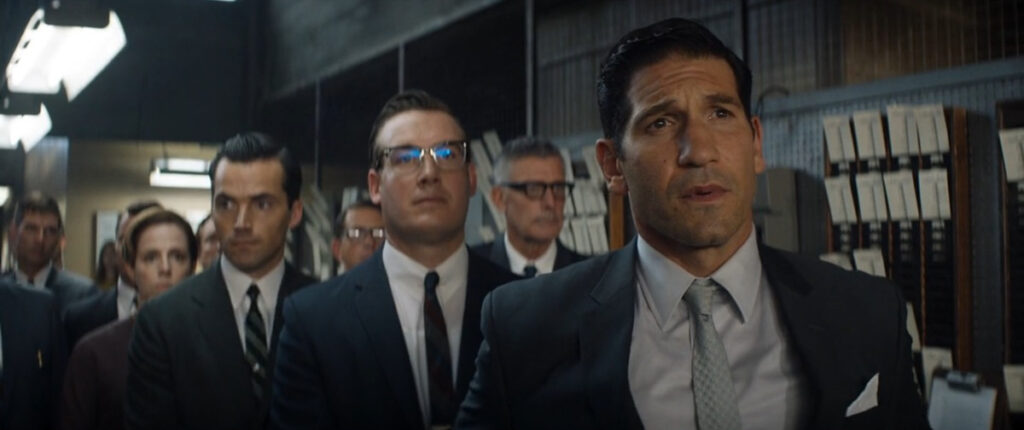
The film also delves into the corporate machinations behind the scenes. The screenplay adeptly navigates the complex dynamics between Ford’s ambitious executives and Shelby and Miles’ rebellious spirit. This tension adds a layer of drama, highlighting the clash between corporate interests and individual passion. It’s a theme that resonates, especially in today’s world, where the battle between innovation and bureaucracy is ever-present.
Mangold’s direction and stellar screenplay make “Ford vs Ferrari” a compelling watch. It’s a film that knows when to throttle up and when to ease off the gas, delivering a balanced and engaging narrative. The result is a story that’s as much about the men behind the wheel as it is about the race itself, making it a must-see for anyone who loves a good underdog story wrapped in the thrilling world of motorsport.
Sound Design and Music
If you’ve ever experienced a racing event’s raw, visceral thrill, you know that the sound is half the excitement. “Ford vs Ferrari” masterfully captures this auditory intensity, making you feel every rev, every screech, and every roar as if you were right there on the track. The sound design in this film isn’t just an afterthought; it’s a crucial element that immerses you fully in the high-stakes world of 1960s racing.
The racing scenes are where the sound design truly shines. When the GT40s thunder down the straights of Le Mans, you can almost feel the rumble in your chest. The engines’ growls are deep and powerful, and each gear shift is punctuated with a crisp, mechanical click that speaks to the precision of these machines. The sound team has meticulously crafted an auditory landscape that’s both authentic and exhilarating, ensuring that every race feels like a sensory overload.
But it’s not just the roar of the engines that impresses. The sound design also captures the subtler aspects of the racing experience. The scrape of metal as cars graze each other, the shatter of glass from a well-placed nudge, the hissing of brakes under strain – all these details contribute to a rich, immersive soundscape. You’re not just watching a race; you’re experiencing it in all its chaotic, high-speed glory.
Then there’s the music, composed by Marco Beltrami and Buck Sanders. The score perfectly complements the film’s narrative, shifting gears with the story’s emotional highs and lows. During the tense build-up to the races, the music swells with anticipation, heightening your excitement. When the cars hit the track, the score blends seamlessly with the sound effects, creating a symphony of speed and danger.
One particularly memorable musical moment is the climactic Le Mans race. As Ken Miles battles for the lead, the music mirrors his determination and grit, driving the tension to its peak. The blend of orchestral elements with the raw sounds of racing creates an almost operatic feel, making the stakes of the race feel even higher. It’s a testament to the power of a well-crafted score in elevating the narrative.
Off the track, the music takes on a more reflective tone, underscoring Shelby and Miles’s personal journeys. Whether it’s a quiet moment of introspection or a heated exchange, the score enhances the emotional depth of the scenes, drawing you further into the characters’ world. It’s this careful interplay between sound design and music that makes “Ford vs. Ferrari” such an engaging experience.
The sound design and music in “Ford vs Ferrari” are as crucial to the film’s impact as the visuals and performances. They work in tandem to create an immersive, high-octane experience that pulls you into the heart of the action. So, the next time you watch, pay close attention to the sounds – they’re what transform this film from a simple racing story into a full-throttle adventure.
Themes and Emotional Impact
Beneath the roar of engines and the adrenaline-pumping races, “Ford vs Ferrari” is a story rich with themes that resonate deeply. It’s not just about cars and competition; it’s about the human spirit, the pursuit of perfection, and the clash between individuality and corporate conformity. These themes give the film its emotional core, making it more than just a tale of speed and strategy.
At its heart, the film celebrates friendship and partnership. The relationship between Carroll Shelby and Ken Miles is the driving force of the narrative. Their bond, built on mutual respect and a shared passion for racing, is inspiring and heartwarming. They are two mavericks against the world, defying the odds and pushing each other to be their best. It’s a reminder that behind every great achievement is a team that believed in each other’s potential.
The theme of determination and perseverance is also central to the film. Both Shelby and Miles face immense challenges, from corporate interference to personal setbacks. Yet, they never give up. Shelby’s dogged determination to build the perfect race car and Miles’ relentless pursuit of excellence behind the wheel exemplify the spirit of never backing down, no matter the odds. It’s a powerful message for anyone ever facing seemingly insurmountable obstacles.

Corporate politics play a significant role in the narrative, highlighting the tension between innovation and bureaucracy. Ford’s executives, led by Henry Ford II, are portrayed as visionaries and obstacles. They want to win, but their rigid, profit-driven mindset often clashes with Shelby and Miles’s creative, free-spirited approach. This theme of corporate interference is something many can relate to, reflecting the real-world struggle between creativity and corporate agendas.
The film also delves into the theme of legacy. For Henry Ford II, it’s about stepping out of his grandfather’s shadow and making a name for himself. For Enzo Ferrari, it’s about maintaining the prestige and tradition of his brand. For Shelby and Miles, it’s about leaving a mark on the racing world. Each character is driven by a desire to be remembered, to create something that lasts beyond their time. The theme adds depth to their motivations and actions, making their triumphs and failures more poignant.
Emotional impact is another area where “Ford vs Ferrari” excels. The film doesn’t shy away from showing the personal costs of their ambitions. Ken Miles’ relationship with his family, particularly his son, is a touching subplot that grounds the high-speed drama in real, human emotions. The film’s climax, particularly the final race at Le Mans, is a rollercoaster of emotions, blending triumph with heartbreak in a way that leaves a lasting impression.
“Ford vs Ferrari” is a film that goes beyond the surface of racing to explore deeper, universal themes. It’s about friendship, determination, corporate politics, and legacy – themes that resonate with anyone, whether you’re a car enthusiast or not. The film’s emotional impact is profound, making it a story that stays with you long after the credits roll.
Reception and Legacy
When “Ford vs Ferrari” hit the theatres, it wasn’t just the petrolheads who flocked to see it. The film garnered widespread acclaim, resonating with a diverse audience and earning accolades for its storytelling, performances, and technical achievements. Critics praised it for being more than just a racing movie – it was a compelling drama with richly developed characters and a gripping narrative.
Upon release, the film was lauded for its historical authenticity and attention to detail. The critics appreciated how it balanced the thrill of racing with the human stories behind the scenes. Publications like The New York Times and The Guardian highlighted its ability to capture the era’s spirit and the authenticity of its racing sequences. The film’s commitment to practical effects and real stunts, as opposed to over-reliance on CGI, was particularly noted as a refreshing choice in modern filmmaking.
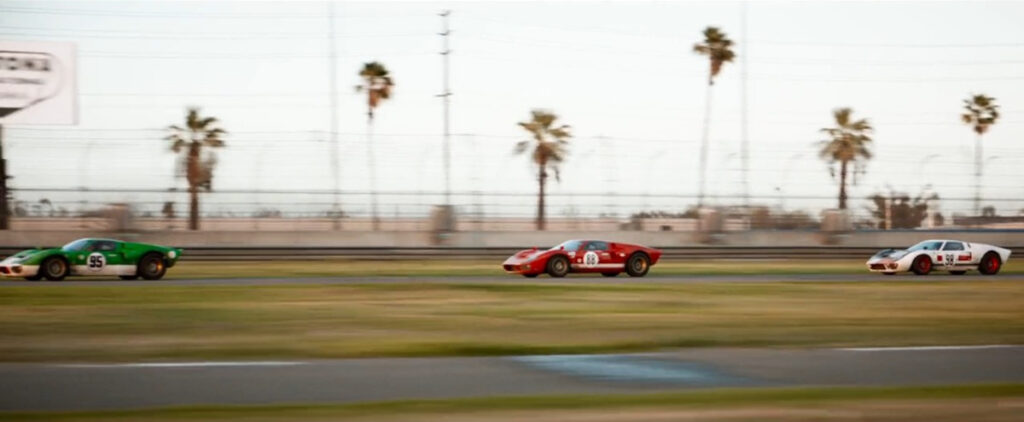
Audiences, too, were captivated. The film struck a chord with viewers who might not have known the full story of Ford’s legendary victory at Le Mans. It brought to life the excitement, the challenges, and the personal stakes involved in such a monumental achievement. The chemistry between Matt Damon and Christian Bale and their standout performances became a focal point of discussion among moviegoers.
“Ford vs Ferrari” also significantly impacted the awards circuit. It received multiple nominations at the Academy Awards, including Best Picture, and won Oscars for Best Film Editing and Best Sound Editing. These accolades recognised the film’s technical prowess and its ability to tell a captivating story that appeals to a broad audience.
But what about its legacy? In racing films, “Ford vs Ferrari” has become a modern classic. It stands alongside other greats like “Rush” and “Le Mans,” offering a meticulously crafted portrayal of one of motorsport’s most storied rivalries. For car enthusiasts, it’s a visual and auditory feast filled with moments that celebrate the art and science of racing. For general audiences, it’s a gripping drama that showcases the power of determination and the thrill of competition.
The film has also reignited interest in the real-life events it portrays. People who watched the movie have explored the history of Ford, Ferrari, Carroll Shelby, and Ken Miles, deepening their appreciation for what these individuals accomplished. It spurred discussions about the importance of innovation, the spirit of competition, and the personal sacrifices behind outstanding achievements.
“Ford vs Ferrari” has received widespread acclaim for its storytelling, performances, and technical achievements. It’s a film that transcends its genre, appealing to car enthusiasts and general audiences alike. Its legacy is one of inspiration and admiration, celebrating the indomitable human spirit and the relentless pursuit of excellence.
Conclusion
“Ford vs Ferrari” is more than just a movie about cars; it’s a full-throttle exploration of human ambition, friendship, and the relentless pursuit of greatness. James Mangold’s direction, combined with a stellar screenplay and top-notch performances by Matt Damon and Christian Bale, makes this film an exhilarating ride from start to finish.
The film’s historical accuracy is commendable, and its attention to detail vividly brings the 1960s racing scene to life. The performances are powerful and authentic, particularly the dynamic duo of Damon and Bale, whose chemistry and depth add significant emotional weight to the narrative.
The cinematography and visual effects immerse you in the racing world, making you feel every turn and jolt as if you were on the track. The sound design and music elevate the viewing experience, perfectly capturing the roar and intensity of the races. Themes of determination, corporate politics, legacy, and friendship are woven seamlessly throughout, providing layers of meaning and making the story resonate on a deeper level.
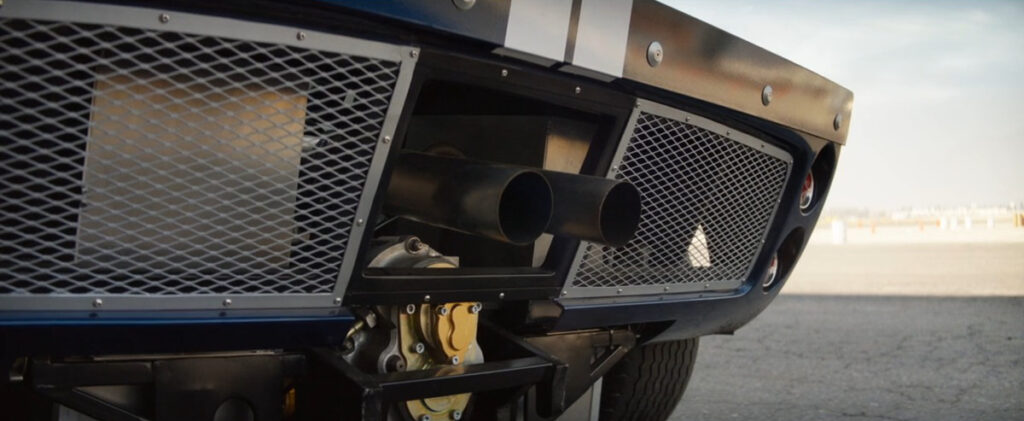
The film has been well-received by both critics and audiences, earning accolades for its technical achievements and storytelling. Its legacy will undoubtedly endure, inspiring both car enthusiasts and general viewers with its portrayal of one of motorsport’s greatest rivalries.
In conclusion, “Ford vs Ferrari” is a must-watch. It’s a film that doesn’t just tell a story – it makes you feel it in every rev of the engine and every beat of the human heart. Whether you’re a racing aficionado or simply love a good underdog tale, this film delivers on all fronts. So grab some popcorn, sit back, and prepare for a cinematic experience that’s as thrilling as a lap at Le Mans.
